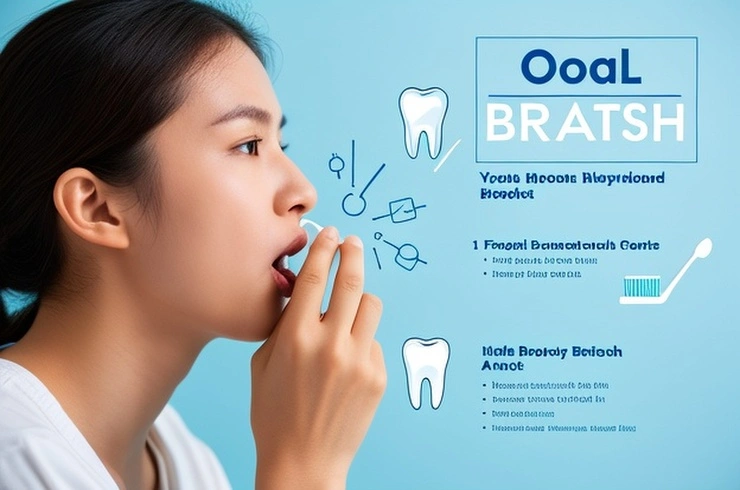
Nobody wants to suffer from bad breath, or halitosis, but figuring out if you have it can be surprisingly difficult. Thankfully, there are several methods you can use to detect an odor and address it effectively. Understanding the different types of bad breath can also offer clues about its underlying cause.
What Your Breath Might Be Telling You
The smell of your breath can vary depending on its origin. While common culprits like garlic, onions, or alcohol are obvious, certain distinct odors can signal underlying oral or general health issues.
Sweet, fruity, or like nail polish: This could be a sign of diabetes or a side effect of low-carb diets like keto.
Rotten: This often points to gum disease, tooth decay, or an infection in your mouth, throat, or lungs.
Sour: A possible indicator of acid reflux, where stomach acid travels up into your esophagus.
Fecal: This can suggest a chronic gastrointestinal disorder or, in serious cases, a bowel obstruction, which is a medical emergency.
Ammonia: A potential sign of kidney disease.
Musty: This odor may indicate liver disease.
Fishy: This distinct smell, also present in sweat and urine, can be a symptom of trimethylaminuria, a disorder where your body struggles to break down a specific enzyme.
How to Check Your Own Breath
While asking someone directly can be the most straightforward method, it's not always comfortable. Here are a few ways to perform a self-check:
The Cupped Hands Test: Cup your hands over your mouth and nose, exhale, and sniff.
The Wrist Lick: Lick your wrist, let it dry for a moment, then smell it.
Floss Test: Floss the back of your mouth, then smell the used floss.
Tongue Scrape: Gently scrape your tongue with a tongue scraper or soft-bristle toothbrush and then smell the scraper.
You can also "taste" your breath. Conditions like dry mouth or dehydration can alter your taste, giving you a sense of your breath's freshness. Signs of dry mouth include thick, foamy saliva and a change in taste. Rinsing your mouth with water can help by washing away debris and stimulating saliva flow.
Seeking Honest Feedback
Asking a trusted friend or family member for their honest opinion can be incredibly helpful. You can also ask them if they notice a white coating on the back of your tongue, a common indicator of odor-causing bacteria. If you're hesitant to ask a friend, your dentist is an excellent resource. They can thoroughly assess the air from your mouth and nose to pinpoint the source of any odor and recommend effective treatments or preventative measures.
Combating Bad Breath
The first line of defense against bad breath is a consistent and thorough oral hygiene routine. This includes:
Brushing twice a day.
Flossing or cleaning between your teeth at least once a day.
Consider using mouthwash or a water flosser to eliminate stubborn odor-causing bacteria that toothpaste might miss.
If you suspect your diet is contributing to bad breath, keeping a food journal can help identify triggers. Temporarily eliminating certain foods might also reveal if they're the cause.
It can be challenging to determine if you have bad breath, but it's far from impossible. If you're concerned, remember there are many ways to prevent and treat it. While good dental hygiene is paramount, sometimes bad breath stems from less obvious causes like diet or underlying health conditions. If you experience persistent bad breath despite your efforts, it's crucial to consult your doctor or dentist. They can help identify any medical conditions, such as digestive issues, that might be contributing to the problem.
Pro Tip
The content of the article is shared by netizens, please carefully identify it